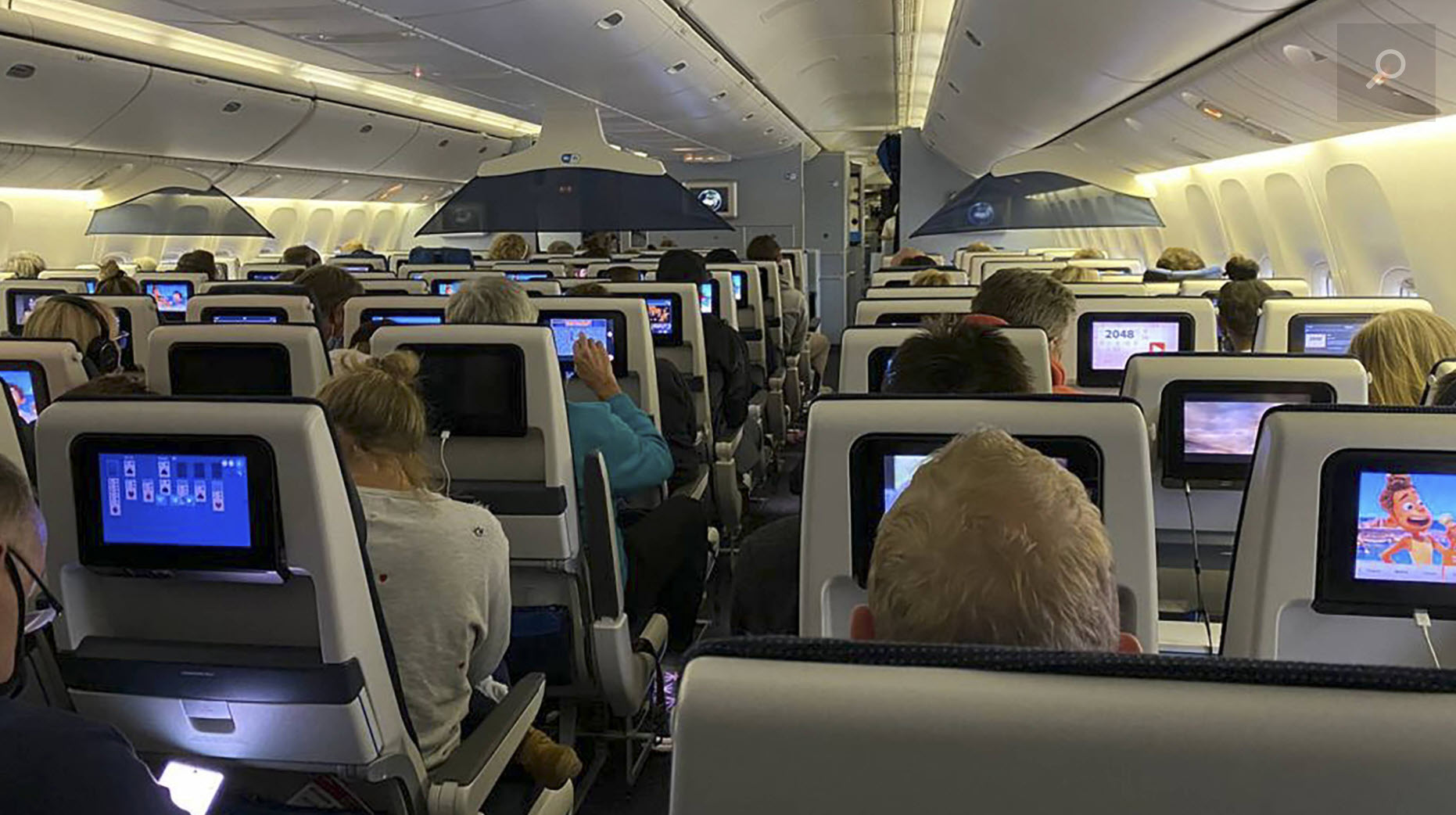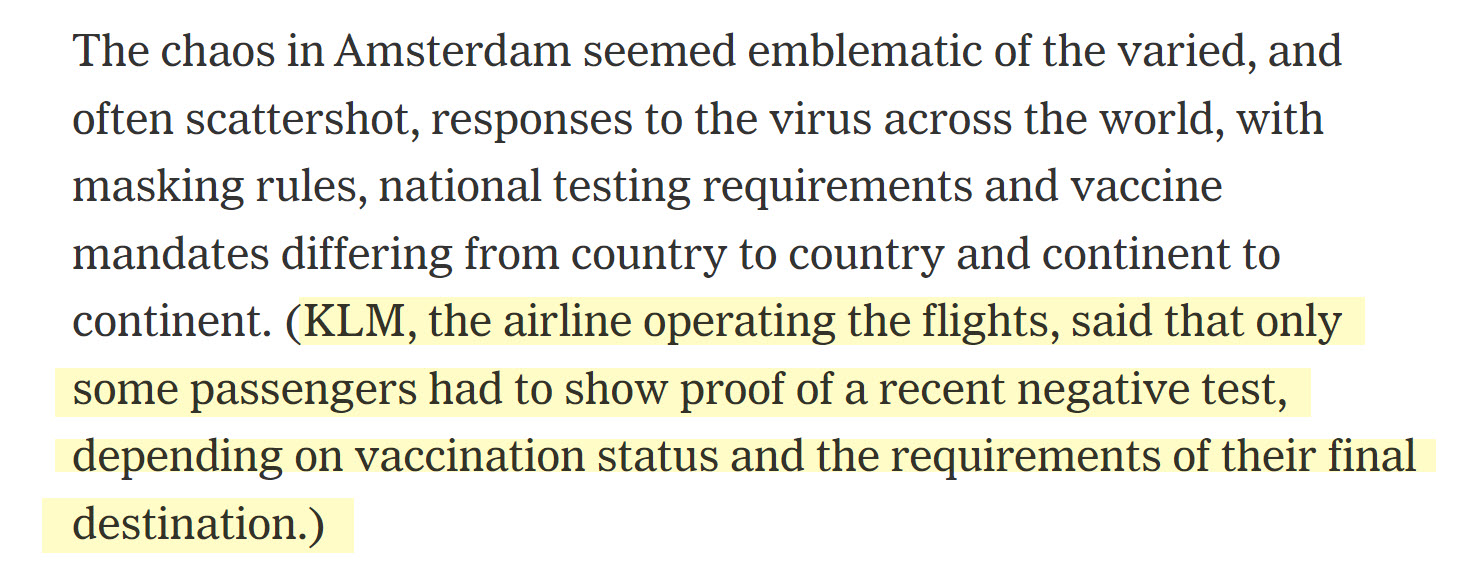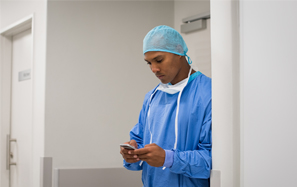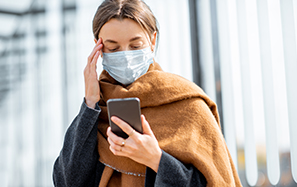The fact that within 10 hours of landing, 10% of the passengers on the 2 flights from South Africa tested positive proves the failure of the 3G (and 2G) coronavirus entry pass. After all, the vaccinated were allowed on board without testing.
Lees volledig artikel: The “Omicron flight from South Africa” proves the failure of 3G and 2G approaches
10% of passengers positive on the “Omicron flight from South Africa”
A crucial element of the investigation into the 600 passengers from South Africa, who landed at Schiphol on Friday morning on two “Omicron” flights, is not being addressed by the media and experts in the Netherlands.

What they are addressing is that 61 (10%) of those passengers were tested positive by the GGD, after arrival and 13 had the Omicron variant. But they are not addressing how that could have happened. What were the rules for these two flights when they left South Africa on Thursday night?
The flights applied a 3G approach
When checking in on Thursday afternoon in South Africa, the 3G approach (tested, vaccinated or recovered) was in effect. Anyone who had not been vaccinated had to have either
- a negative PCR test from within 48 hours ago,
- or a negative antigen rapid test from within 24 hours ago.
The vaccinated were allowed to board untested, when they were not in transfer from another country.
In the news about this flight, I mainly read that the rapid test does not detect very well. (From my own experience, it wasn’t until about 16 hours after I started coughing and felt like something might be going on, that the rapid test turned positive. Twelve hours earlier, that rapid test would have been negative.)
But it cannot be that this was the big problem with these two flights. American New York Times journalist Stephanie Nolen, who was present during the flight, described that she had learned from conversations with other passengers that a large proportion had been vaccinated. But the vaccinated were not required to be tested when they left. Because de facto, the arrangement at departure was the 3G system. (It was only after that the approach from South Africa changed and everyone had to be tested beforehand.)
This was in the New York Times about those two flights:

Not possible
Precisely among those 61 people that tested positive, there must have been many people who were doubly vaccinated. The likelihood that between the departure from South Africa and the moment that the test took place (I estimate at most 24 hours later), those 61 people were not only infected but subsequently also showed a positive test, is virtually zero. After all, the average time between being infected and the first symptoms is 60 hours. So those 61 people who tested positive couldn’t have become infected during the flight or afterwards at Schiphol Airport.
When I read the reports and see the pictures of how these passengers spent hours in an airplane, then a while in a bus and then crammed together on pier G, I estimate that some of this group will have quite a few symptoms in the days to follow. This becomes clear when reading the reports in the Dutch media of those who were on the flight and at Schiphol. There is a very good chance that this very event turned out to be a superspreading event (with about a quarter of those able to infect others having the new Omicron variant).
This is a tweet from that New York Times journalist who had been on one of the two flights, after arriving at her destination in Canada.

Ashamed
Here you can read the tweets she posted during her stay at Schiphol and afterwards. Anyone who had any kind of responsibility for what happened at Schiphol that Friday should be ashamed of themselves. It shows how bad we in the Netherlands are at organizing and improvising during this crisis. Plus, no one apparently took and takes responsibility either for
- not having an elaborate emergency plan for such a situation,
- and a suitable implementation on the spot (with drinks, food, blankets and most importantly: timely information).
3G (and 2G) is as leaky as a sieve
And so we know on Friday at Schiphol Airport, just about everything that could have gone wrong went wrong. But above all, it is proof that 3G (and soon 2G) is an approach with a coronavirus entry pass that actually provides a false sense of security. Because there may be quite a few people present who are contagious. So that approach actually helps spread the virus instead of stopping it.
Surely, by now, the Dutch Health Authorities (GGD-Kennemerland) should have the following information:
- First, how many vaccinated passengers were on the flight and appear to have tested positive.
- Second, how many passengers with a negative PCR test were on the flight and appear to have tested positive.
- Third, how many passengers with a negative rapid test were on the flight and appear to have tested positive.
And if not, this information should be collected immediately and then made public. It should be a crucial argument for our leaders (Government and Parliament) to abolish 3G immediately and to not introduce 2G. In other countries, they should do the same. And recognize that a coronavirus entry pass admitting vaccinated people without testing is a flawed approach.
We would be very grateful if you made a small voluntary contribution every now and then via our donation page.
You have just read: The “Omicron flight from South Africa” proves the failure of 3G and 2G approaches.







